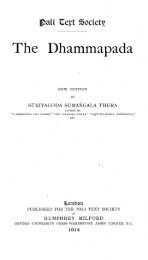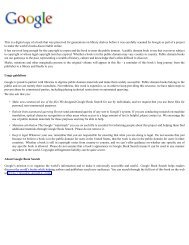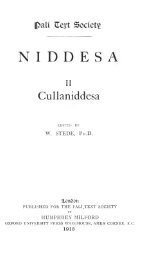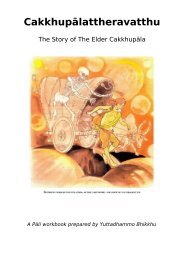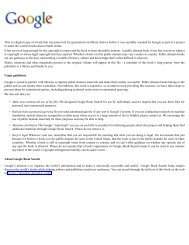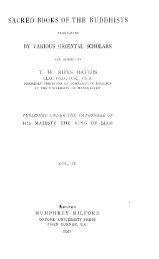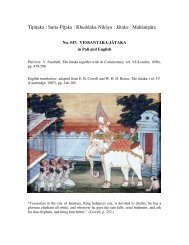Lessons In Practical Buddhism - Sirimangalo.Org
Lessons In Practical Buddhism - Sirimangalo.Org
Lessons In Practical Buddhism - Sirimangalo.Org
Create successful ePaper yourself
Turn your PDF publications into a flip-book with our unique Google optimized e-Paper software.
many minutes, hours, days, or even years you practice<br />
meditation; in order to understand reality, you have to<br />
meditate just now. If you clearly see an experience as it is<br />
for a single moment, then that moment is meditation, and<br />
has no bearing on the next moment. Progress in meditation<br />
is dependent on stringing together moment after moment of<br />
clear awareness until the habits we have formed based on<br />
ignorance are replaced by new habits leading to clarity and<br />
insight.<br />
At every moment of seeing, hearing, smelling, tasting,<br />
feeling or thinking, we react according to our habitual<br />
programming; if we have conceived a liking for something in<br />
the past, our reaction will generally be to desire it; if we have<br />
conceived a disliking for something, we are more than likely<br />
reject it. This patterned behaviour occurs incessantly, so in<br />
order to combat addiction and aversion our meditation must<br />
be likewise incessant; it must be a moment to moment<br />
activity. This is the basis of the practice of mindfulness. As<br />
the stomach rises, we focus on it for that moment, then let it<br />
go when it is gone; as the stomach falls, we likewise<br />
recognize it for what it is and then forget about it. Our only<br />
work should be to affirm the nature of the object in the mind<br />
moment after moment, so that it reacts not out of ignorance<br />
but out of clear and pure awareness of the object as it is:<br />
seeing is seeing, hearing is hearing, smelling is smelling,<br />
tasting is tasting, feeling is feeling, thinking is thinking. This<br />
is what is meant by the practice of “sati” or “mindfulness – to<br />
remind ourselves of the object for what it is, so that there is<br />
no room for judgement or partiality of any kind.<br />
The way we do this is by identifying the experience with a<br />
word, and using the word in much the same way as other<br />
meditation traditions use a mantra – reciting it to focus the<br />
mind, in this case on ultimate reality. A mantra is a common<br />
tool in meditation practice, used by practitioners before the<br />
Buddha began to teach; it’s just a word or phrase that is<br />
repeated internally to focus the mind. Mantra meditation as<br />
practised in other traditions, however, generally has nothing<br />
to do with the reality of mundane experience – one does not<br />
hear of spiritual practitioners in other traditions using<br />
mantras like “walking” or “pain”, since these are not<br />
generally considered valid objects of spiritual development<br />
71



